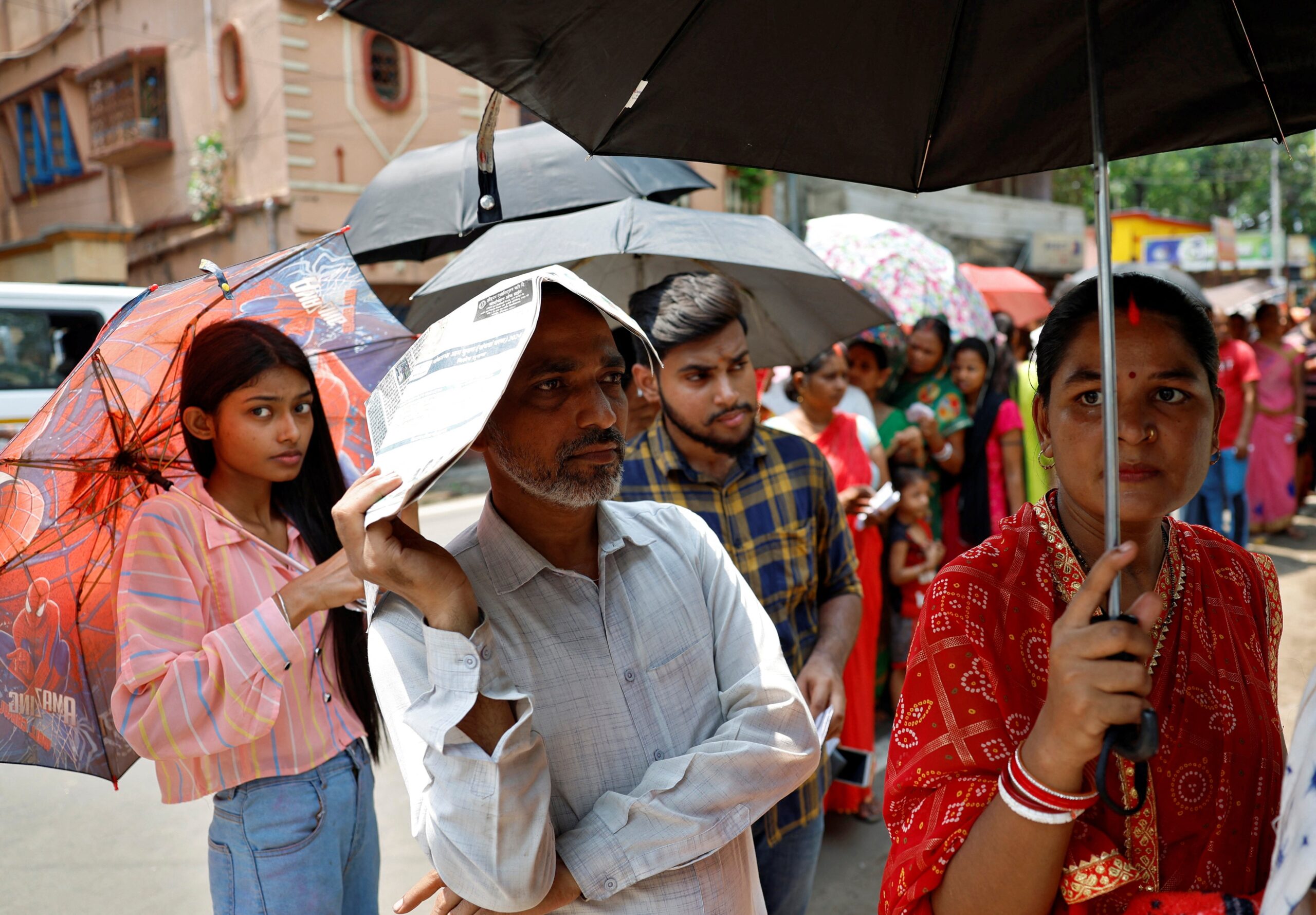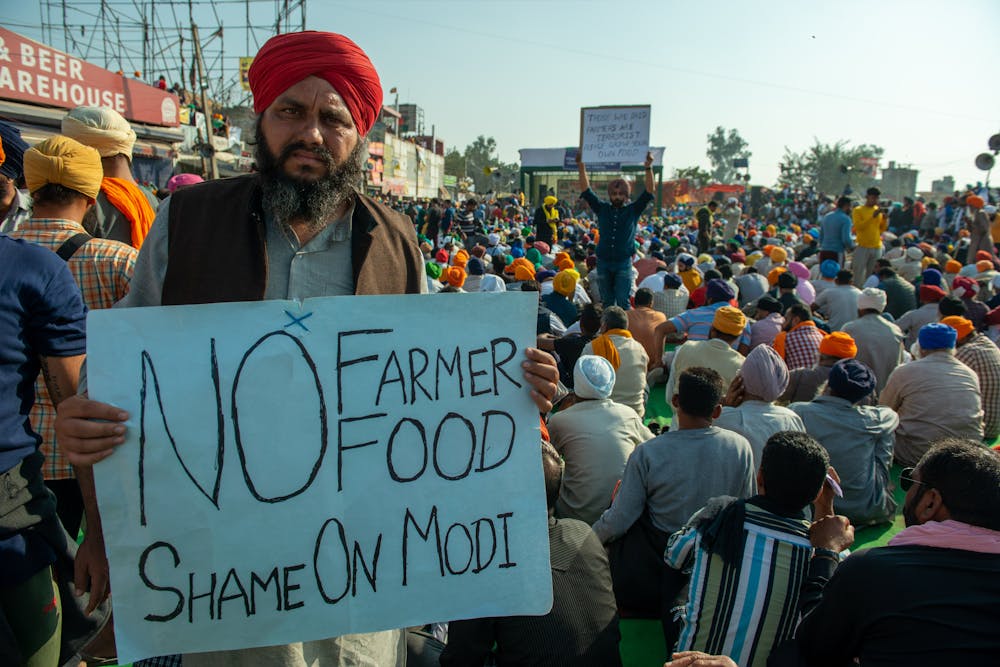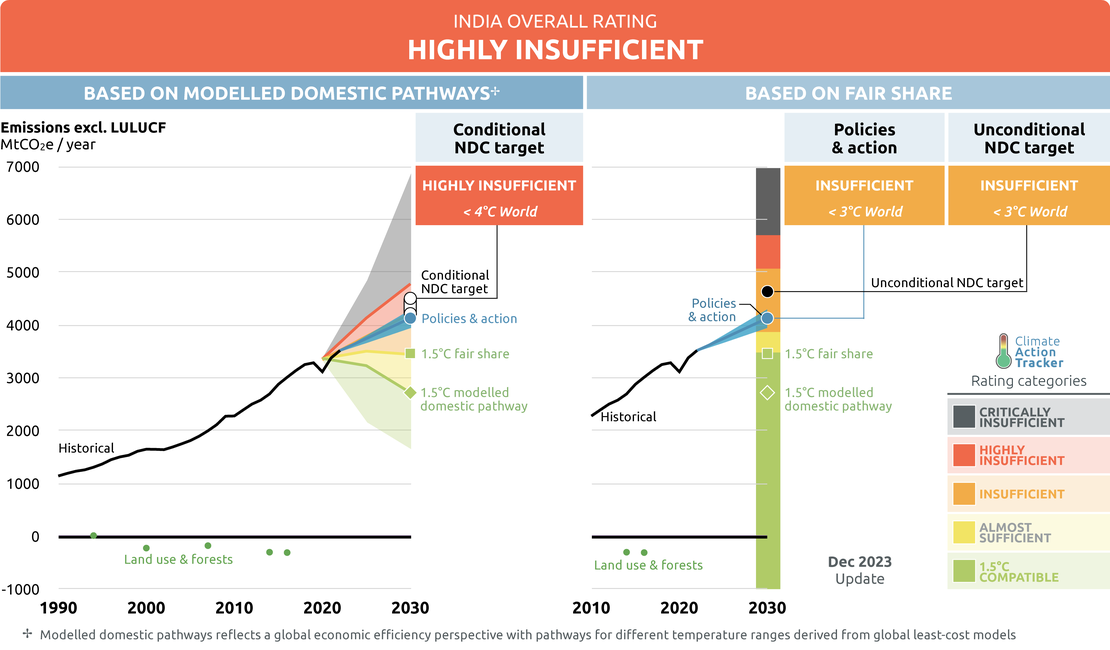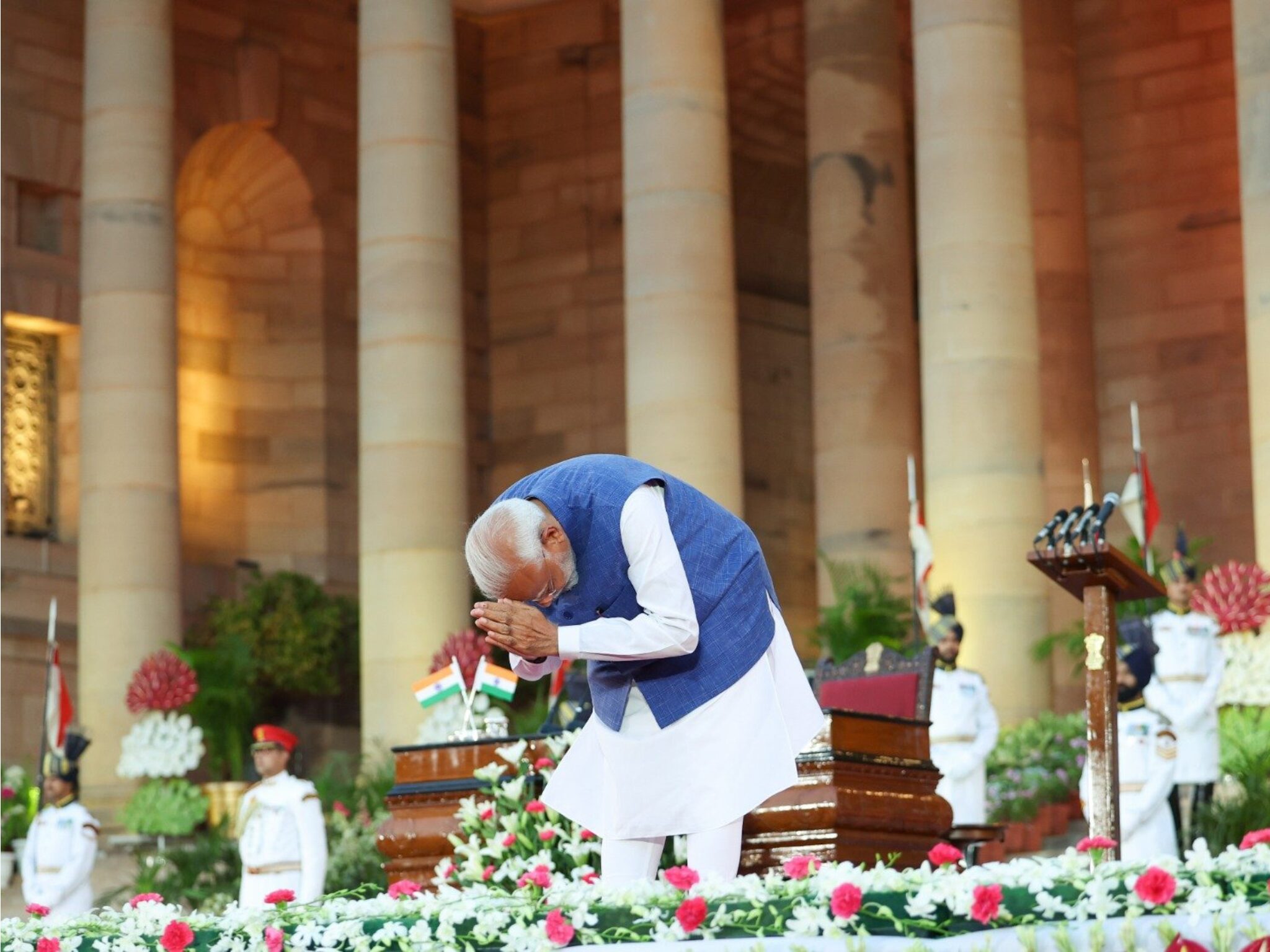6 Mins Read
India’s dramatic election results have confirmed a third term for Narendra Modi, but with a much-weakened mandate – is climate change to blame (or thank) for that?
India stands third in the world for the number of billionaires and the amount of greenhouse gas emissions, and that perhaps sums up the paradoxical nature of the nation’s latest election.
As Narendra Modi was sworn in for a third term as prime minister, he did so much later and in much different circumstances than his party, the Bharatiya Janata Party (BJP), expected. Before the election – where 642 million Indians, or 8% of the world’s population, voted – the narrative was one of a third-consecutive landslide victory for the right-wing party.
With a mandate built on Hindu nationalism, the slogan ‘Ab ki baar, 400 paar’ (This time, past 400) – a redux of the 2015 campaign slogan ‘Ab ki baar, Modi sarkar’ (This time, a Modi government) – was all over the BJP’s communications, referring to a parliamentary supermajority that would allow the party to amend the constitution.
Things, however, didn’t pan out the way Modi wanted. The BJP didn’t even obtain the simple majority of 272, let alone 400, instead having to rely on alliances to form a coalition government with the National Democratic Alliance (NDA). It was a victory that felt like defeat, and vice-versa for the now-strong opposition INDIA coalition, led by Congress member and political dynast Rahul Gandhi.
The shock result of the world’s largest election was a rejection of the BJP’s religious persecution, and was ascribed – by Gandhi no less – to India’s poorest. In the last decade, the country has become the fifth-largest economy in the world, but the wealth gap has never been more stark.
The disparity can also be found when you look at who feels the worst effects of climate change. While Modi may have built an us-versus-them mentality using the historical emissions of the “hypocritical West”, the climate crisis was notably absent from his entire electoral campaign, despite India being amongst the 40 nations most vulnerable to global warming.
Climate change drove farmers away from the BJP

The sheer size of India’s elections makes for complex logistics – this year, the entire exercise ran six weeks. And while the length of the election isn’t anything new, it was a much larger focus because of the extreme heatwaves sweeping through the nation.
In the northern states of Bihar, Uttar Pradesh and Odisha, at least 33 people – including election officials on duty – died of suspected heatstroke in a single day in May. This followed reports that parts of New Delhi almost breached the 53°C barrier, the highest-ever temperature recorded in India, prompting the High Court to warn that the capital could soon turn into “a barren desert”.
But despite the Election Commission setting up a task force to monitor weather conditions (only after voting was underway) and sending a heat precaution list to poll workers, party campaigners were told not to do anything differently in the face of the heat.
This encapsulates the attitude towards the climate crisis by India’s lawmakers. While people suffer fatally from extreme weather, the BJP promised more temples and a better economy. But at what – and whose – cost? Unemployment and cost of living have been pinpointed as two key reasons that voters turned sour on the incumbent government.
In his second term, Modi faced one of the most powerful backlashes of his political career. While India and the world went in and out of lockdowns, hundreds of thousands of farmers poured into New Delhi to protest against his moves to open up more private investment in agriculture. The farmers believed this would make them vulnerable to low prices.
Agriculture is the biggest source of income in India, with 70% of rural households dependent on farming, and 82% being small or marginal farmers. But as climate change worsens, so does its impact on the sector. Extreme heat and droughts are decimating crops, while groundwater is already in short supply. Farmers are facing crippling debt – since Modi first took office in 2014, estimates suggest 100,000 farmers have taken their lives.
These are all climate issues. Ignoring them has swayed many former BJP voters, who are rightfully dismayed by the lack of jobs outside agriculture for India’s youth, many of whom grow up in farming families riddled with debt for their entire lives.

India’s inadequate climate goals need a revamp
Modi’s first speech after it became apparent that his coalition would gain the majority represented some marked shifts from his previous rhetoric. ‘Jai Shree Ram’ became ‘Jai Jagannath’ (after Ayodhya voted out the BJP despite the building of a divisive temple on the site of a destroyed mosque), the Modi government was now the NDA government, and climate change was suddenly an issue.
The prime minister took note of the election workers who toiled away in the sweltering heat for weeks, and, while there was no mention of the failure of reaching the 400-seat target, read between the lines and you could sense relief, and worry.
India’s emissions are off the charts, thanks in part to its agricultural practices, and in even larger part to its fossil fuel industry. Coal, specifically, is the biggest source of electricity across the country, and its use actually grew this year. And, despite being the third-largest solar power generator in the world, the overall share of clean energy has subsequently decreased, making up just around 22% of the total.
At COP26, Modi set out a pledge to reach net zero by 2070, but more than half of India’s electricity will still be sourced from coal by the end of the decade. And its climate target (or nationally determined contribution) has been deemed “highly insufficient” by the Climate Action Tracker, with current policies and action rated as “insufficient” as well.

This makes it all the more infuriating that climate change was just not on the ballot in India this year. It mirrors the larger political landscape: only 0.3% of the questions asked in the parliament are about climate change, and just one of the country’s 700-plus parties is focused on the environment.
But per capita emissions have risen by 93% since 2001, and heat-related deaths increased by 55% from 2000-2004 to 2017-2021. Climate change needs to be on the parliamentary agenda – especially since neither the BJP nor the INDIA coalition made any clear campaign commitments for the climate crisis, with just a handful of eco targets intertwined with promises to grow infrastructure.
For climate activists, the concern starts at the top, with Modi. This is a man who has infamously compared the changing climate to people’s heightened sensitivity to cold when they age. He has also proclaimed that the “climate has not changed”, but people and their habits have spoiled and destroyed the environment (identifying the very reason that the climate has, in fact, changed).
As a country, India proved that democracy is still important and alive, and secularism is part of its social fabric. In a climate election year, its voting surprised everybody – but now, its farmers, islanders, and climate-vulnerable citizens are hoping that the government springs a surprise too. It’s imperative that it does.




